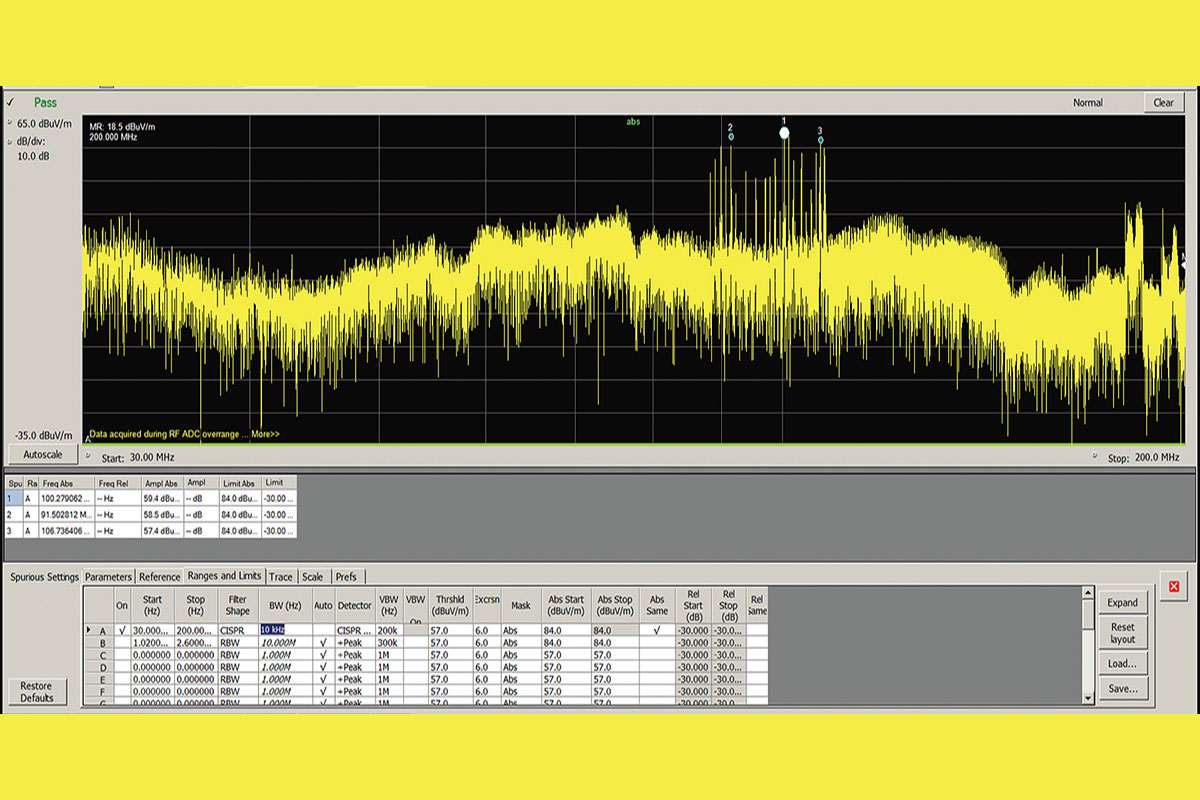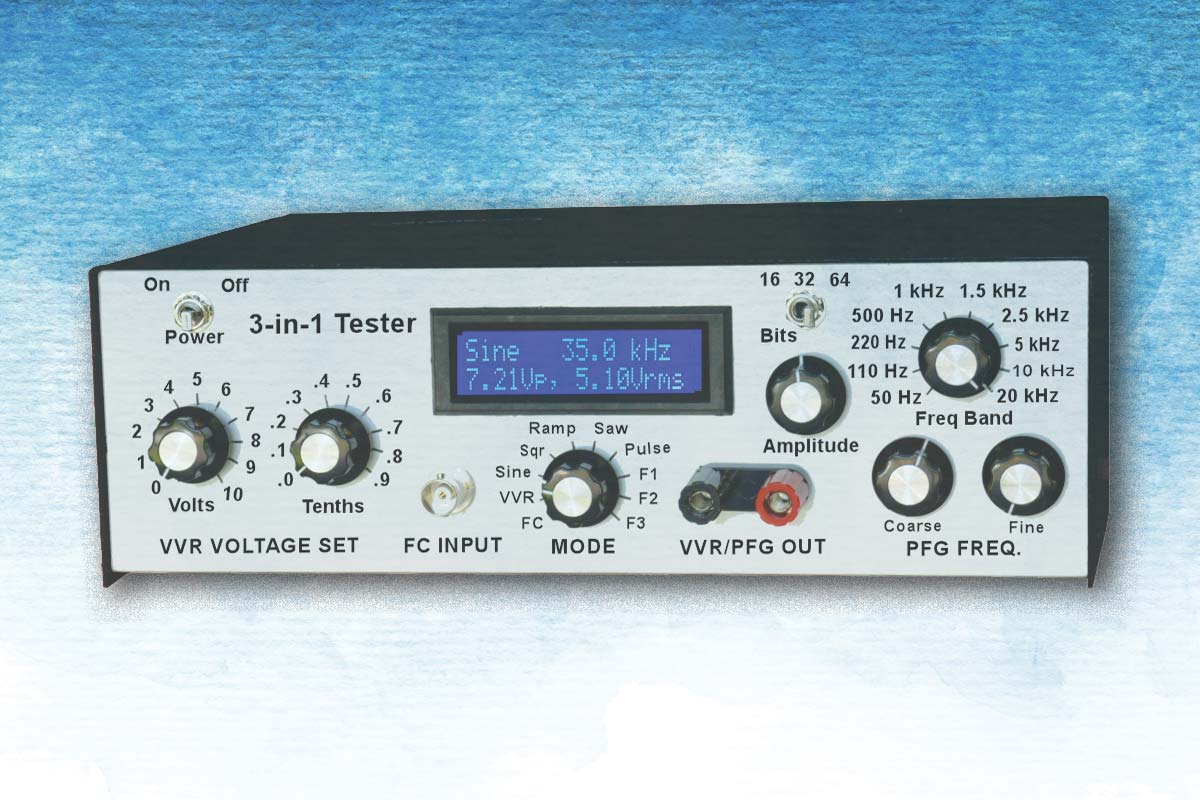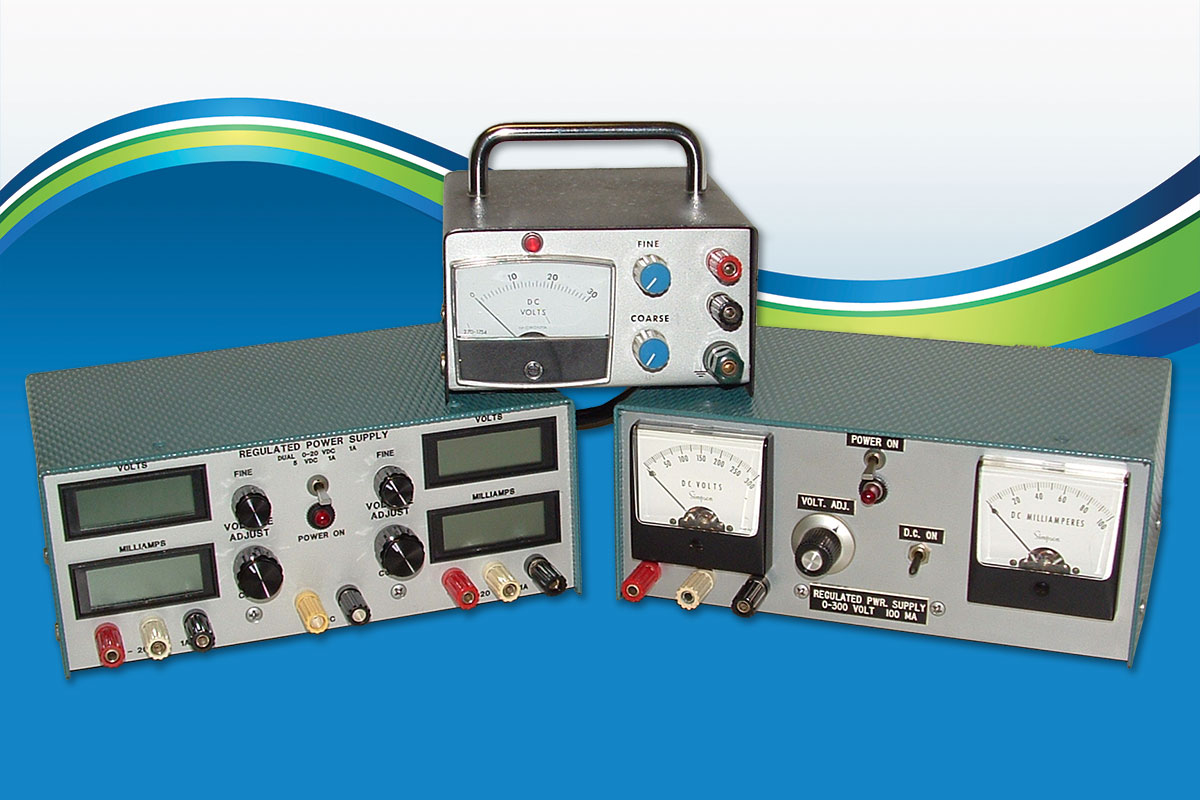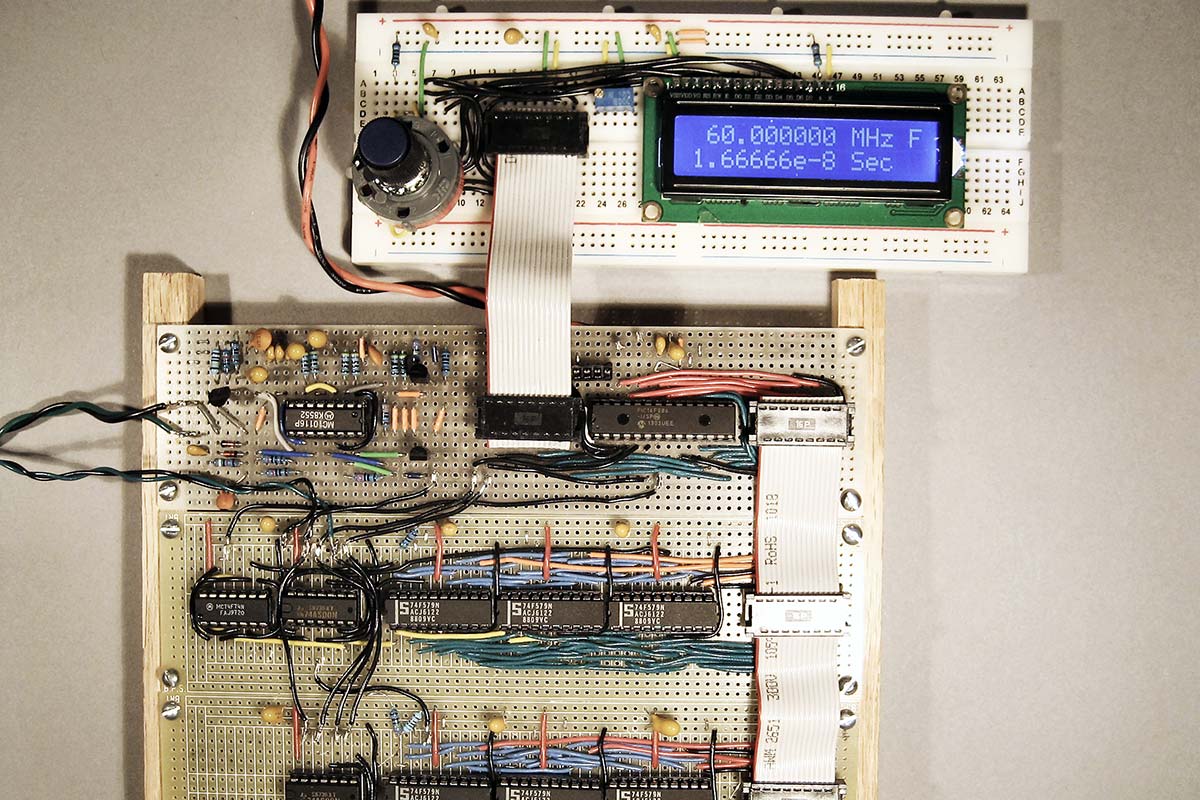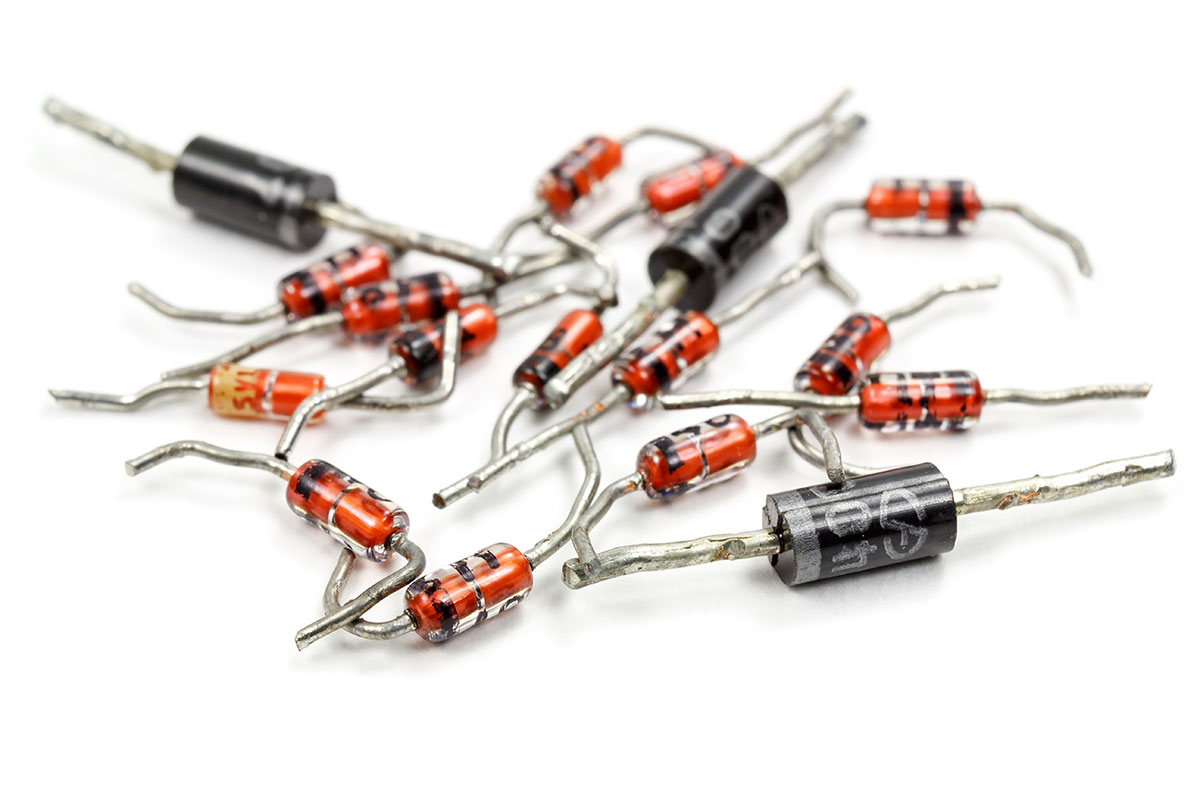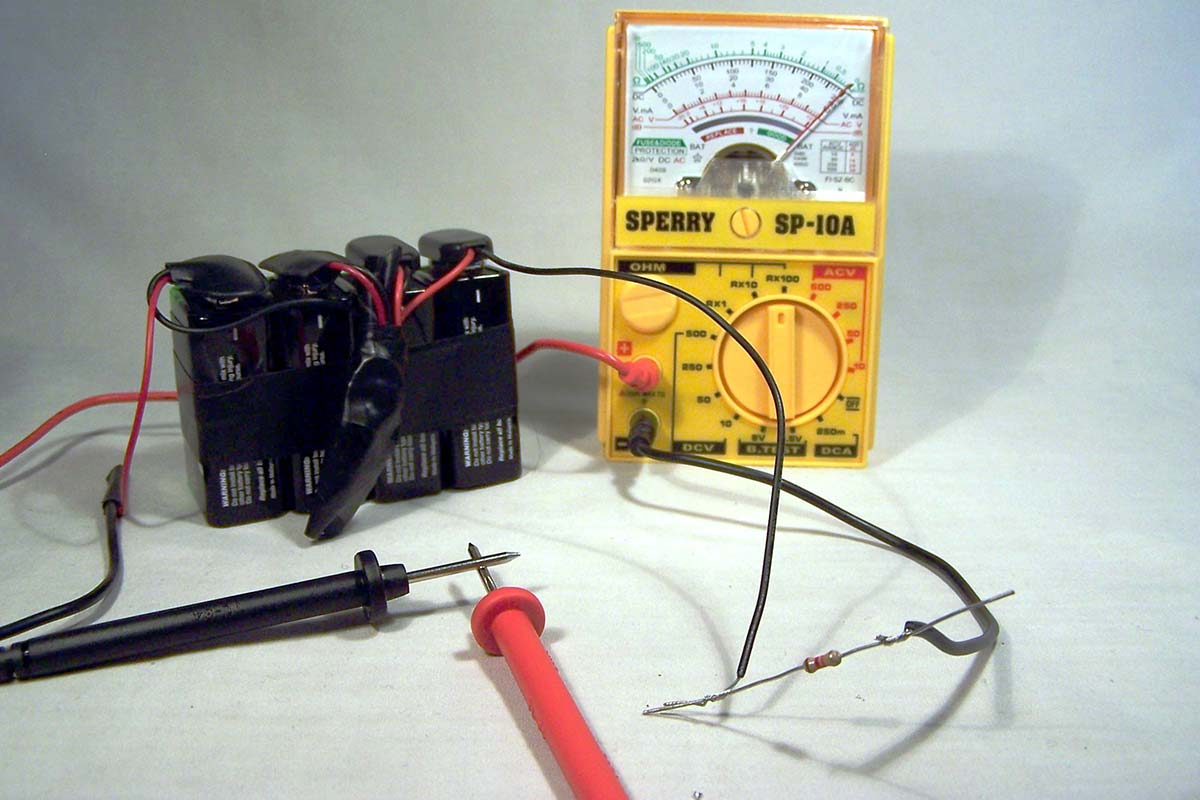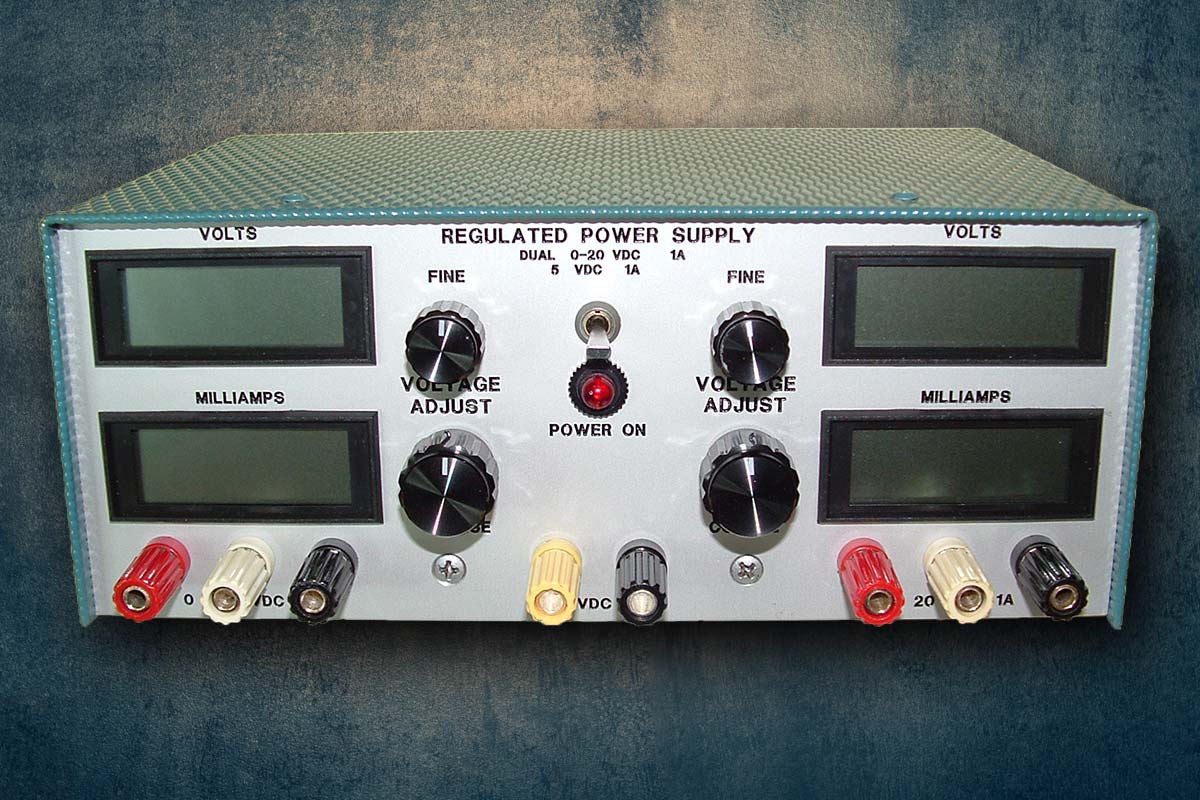This DIY piece of test equipment combines a variable DC voltage reference, a programmable function wave generator, and a fully functional frequency counter. Plus, it costs under $200. It started out as a microcontroller controlled variable voltage reference using just a PIC, a fixed voltage reference, and a digital-to-analog converter. However, it expanded to include a programmable function generator that can produce a sine wave, triangle wave, square wave, etc. I then went further to include a frequency counter to measure the frequency of the function generator output.

